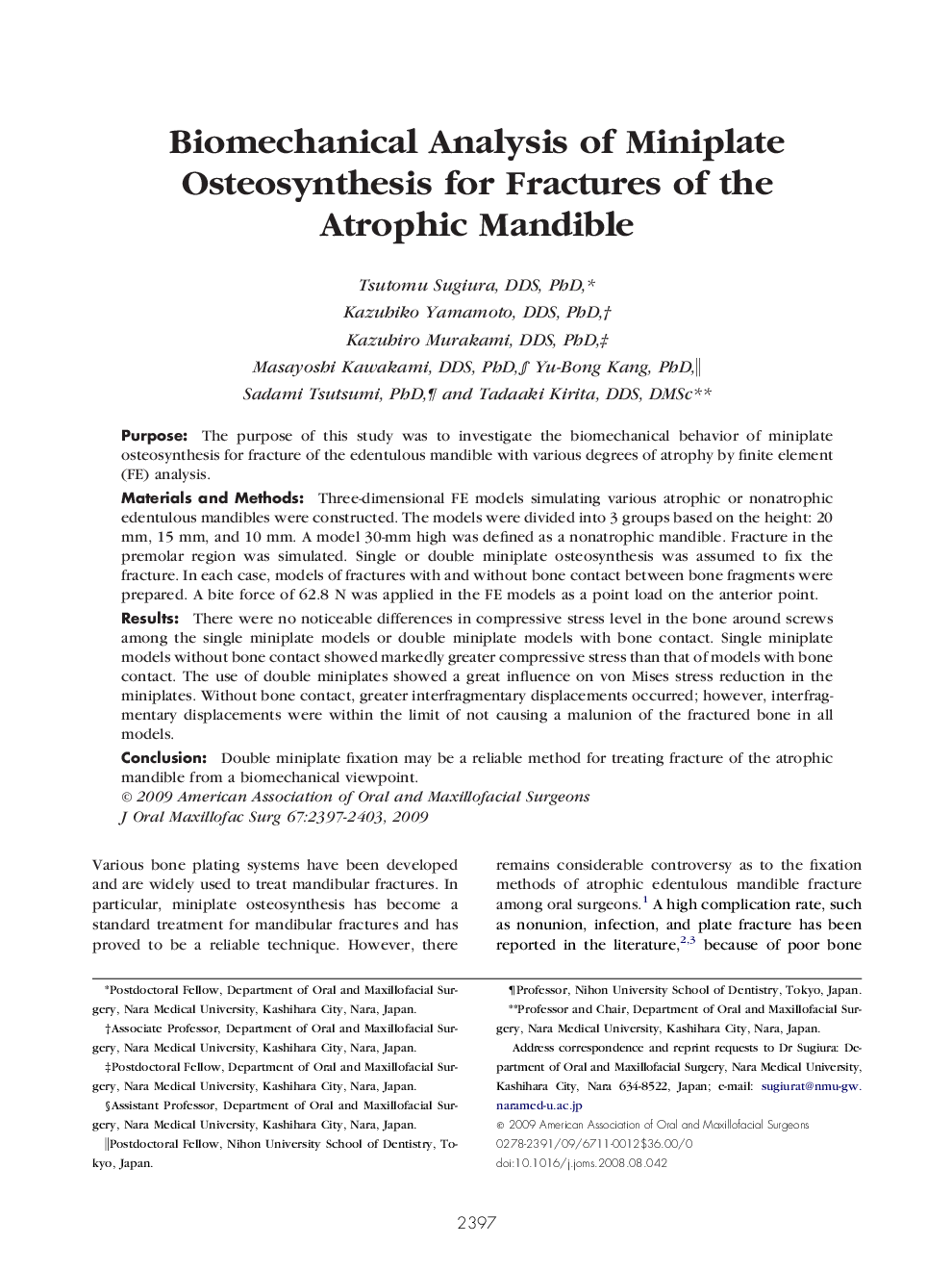| Article ID | Journal | Published Year | Pages | File Type |
|---|---|---|---|---|
| 3155103 | Journal of Oral and Maxillofacial Surgery | 2009 | 7 Pages |
PurposeThe purpose of this study was to investigate the biomechanical behavior of miniplate osteosynthesis for fracture of the edentulous mandible with various degrees of atrophy by finite element (FE) analysis.Materials and MethodsThree-dimensional FE models simulating various atrophic or nonatrophic edentulous mandibles were constructed. The models were divided into 3 groups based on the height: 20 mm, 15 mm, and 10 mm. A model 30-mm high was defined as a nonatrophic mandible. Fracture in the premolar region was simulated. Single or double miniplate osteosynthesis was assumed to fix the fracture. In each case, models of fractures with and without bone contact between bone fragments were prepared. A bite force of 62.8 N was applied in the FE models as a point load on the anterior point.ResultsThere were no noticeable differences in compressive stress level in the bone around screws among the single miniplate models or double miniplate models with bone contact. Single miniplate models without bone contact showed markedly greater compressive stress than that of models with bone contact. The use of double miniplates showed a great influence on von Mises stress reduction in the miniplates. Without bone contact, greater interfragmentary displacements occurred; however, interfragmentary displacements were within the limit of not causing a malunion of the fractured bone in all models.ConclusionDouble miniplate fixation may be a reliable method for treating fracture of the atrophic mandible from a biomechanical viewpoint.
